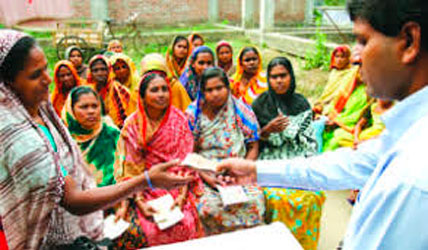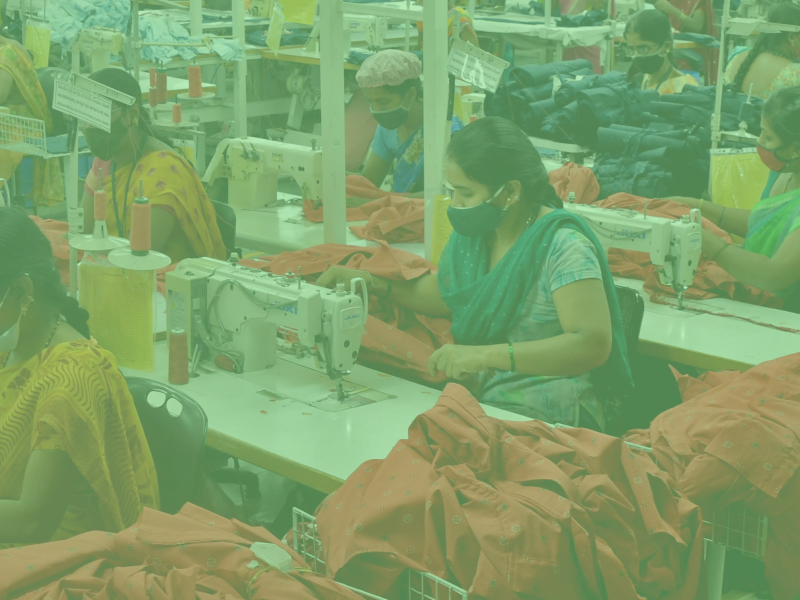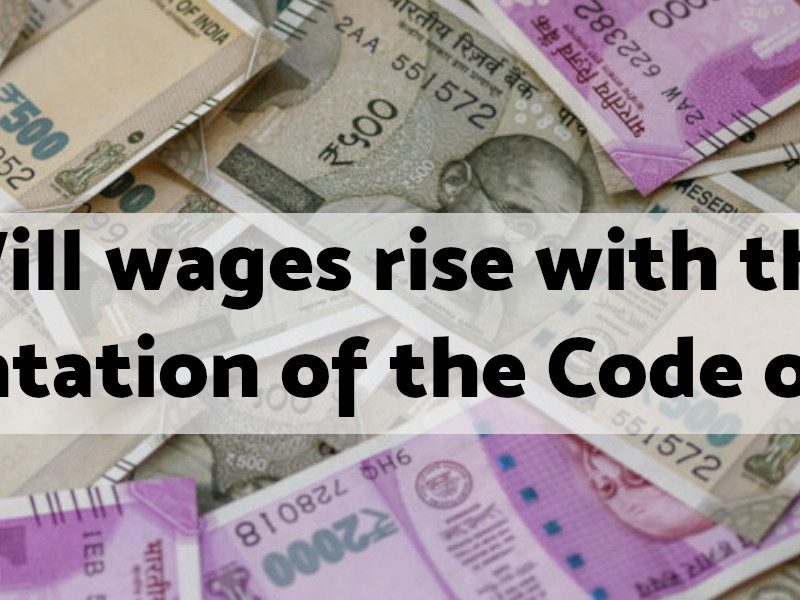Many of us have seen magicians or sadhus rise up from their seat while in deep thought or meditation! This we attribute to skill for the magician and supernatural power for the sadhu. Interestingly they both use the same science to do this. Though the performers appear to be defying the laws of physics, the structure they use to afloat is remarkably simple. This three parts: (1) a seat on which the performer sits; (2) a shaft that elevates the seat; and (3) a plate that holds the entire contraption to the ground and provides it stability. A rug or a patch of grass covers this plate and the performer wears clothing that is loose and has long sleeves to hide the shaft. This act no longer remains magical, super natural! It becomes pure science used to trick people.

Micro-credit is a similar magical trick of the late 20th century. It has moved many people and even many governments off their feet. And the person who made this global was no other than the Nobel laureate economist Muhammad Yunus from Bangaldesh. His micro-credit movement ‘completely revolutionised the lives of people living in rural areas’ of Bangladesh with a mission to “enable the poor, especially women, to create a world without poverty and hunger”. He has expanded his concept to developed countries via Yunus Social Business, founded in 2011. This is the magical element of it, the supernatural power to eliminate the greatest problem of poverty for third world economies.
Demystifying the Magic
Let us begin where Professor Yunus began. The first loan he gave was of $27 from his own pocket. He lent it to 42 women basket weavers in a village near Chittagong University where he taught. He discovered that they quickly repaid the amount by selling their goods in the market. These women, earlier, used to take loans from village money lenders at very high interest rates as banks would not provide them with loans. Thus begun the experiment of providing micro-credit to poor women to promote their entrepreneurship.
What this experiment however assumes are:
- •The women are basket weavers by choice which means that they have other options of livelihood and yet they choose to be entrepreneurs;
- •The women are able to make enough from basket weaving to have a decent life and they do not self-exploit themselves. For an entrepreneur, ‘making enough’ means not just compensation for their time but also should include profit; and
- •The women repay on time because they want to and not under duress.
- •These are critical questions that are fundamental to the understanding of the basis of micro-credit.
Micro-credit is central to the World Bank agenda of fiscal prudence which is a fancy name for telling governments of third world economies to freeze their spending on the poor. Microcredit is the other side of the coin that puts restrictions on governments to spend on education, health, housing, pension on one side. So micro-credit is the vehicle to shift government responsibility of eliminating poverty to individuals (the poor) who would now be responsible for eliminating their own poverty. According to this framework, the burden of rising out of poverty falls on the poor themselves. If they are able to do so, they are labelled ‘entrepreneurs’ and if not, they can be blamed for their lack of entrepreneurial skill. So the problem of poverty is now a problem of the poor themselves. Thus it completely negates historical conditions that make a large section of the population poor and keeps them poor and also present economic factors that are pushing more and more people into poverty and continuously increasing the income gap between the rich and the poor.
Now let us closely examine the three fundamental assumptions behind the success of the microcredit story.
Assumption 1: On Choice: The assumption that women are basket weavers by choice is the greatest lie that has been fed to the world. The greatest crisis that Bangladesh or India or any other country has been facing since the late 20th century is that of job creation. The old engines of job creation, especially in manufacturing, are not able to create enough jobs and especially good jobs. The jobs coming to the global south are mostly jobs with low wage and next to no social protection. The garment industry is the largest employment provider in Bangladesh and Rana Plaza has shown the world how garment workers work and live in Bangladesh. In India, the choice is a little wider but the conditions are not very different. Most workers, now increasingly more and more younger workers, are being pushed into the service sector in urban centres where jobs are mostly on contracts that provide only that much that keeps a worker alive. Yet large number of workers choose to join this in the hope that they might eventually improve their working condition and get regularised.
The rural areas do not even have this option. Agriculture is in crisis. Number of people dependent on any farmland has kept on growing. There are no non-farm waged employment opportunities available that people can shift to. This has forced people into ‘businesses’ that brings in some income into the family. These ‘businesses’ can be basket weaving, can be other home-based work, can be other forms of craft, etc. These are in many instances performed by women because the men are engaged in either waged work in the same area or have migrated to the cities.
This model is often even looked as increasing women’s participation in economic activity. It is but at what cost? Women are pushed into this economic activity as the men are not able to provide for the entire family. This is a reality even if some people may think otherwise. The moment the men find a decent job, most women pull out of this kind of economic activity. They pull out for various reasons: (i) there is no one to share the double burden of the household chores and care work with them; (ii) the work they do usually is very time intensive and hence leads to burnout; (iii) the risk is high – if they are not integrated with a market and therefore are not able to sell their goods at any point of time, they have to bear the loss which further pushes them into a poverty and debt trap; (iv) if they are integrated with a market economy, they are too weak as individuals or even a small group of individuals, such as a self-help group (SHGs), to bargain a decent price for their goods and as a result become the most exploited in the supply chain. Thus ‘choice’ is the last word in the vocabulary of these women. It is compulsion to ensure mere survival.
Assumption 2: On ‘Making Enough’: We all know Professor Yunus lent $27 to 42 women as seed money for their ‘business’ of basket weaving. We know these women paid back in time. We also know that the women paid back their past loans taken from money lenders at high interest and were soon saving money. But do we really know how much the women were taking home? Do we also know how many hours each one of them worked to make this possible? Do we also know whether they involved other members of their family, including their children, to finish the goods that they were to sell? And do we know whether these ‘entrepreneurs’ were even making as much as the minimum wage. These are uncomfortable questions that no one should ask as these are the questions that reveal the rising seat of the sadhu on a shaft held to the ground covered by his loose garment and the carpet on the ground.
What the women make by selling their products is dependent on the market for these products. The products such as cane baskets or papads or any such product or even services such as tailoring, or beauty services as being promoted by the skill development programme of the Government of India for rural women as alternative livelihood, are (i) necessarily low value products and hence has very little margin between the cost of production and the price that it fetches in the market; and more importantly as pointed out in the earlier section (ii) products that are consumed locally by people who can afford very little or are bought my middlemen to be sold in the market where the price they get may be higher than in the local market but does not reach the producers.
Let us take the concrete example of the famous Lijjat papad, which is a cooperative of women, to understand how much money women workers can possibly make by rolling papads even in the best possible situation. We are looking at this to understand how many packets of papad do they have to produce in a day to make the minimum wage? From a study on Lijjat Papad we find that the price of a packet of papad is composed of the following:
- •Cost of raw material
- •Rolling charges, Vanai
- •Packaging cost
- •Selling expenses
- •Administrative expenses and
- •Finally a mark-up on the cost.
In 2003 the vanai charge paid to the workers/members was Rs. 14 per kg of papad while the price of 100 gm of papad ranged between Rs. 13 and Rs. 15. This implies the rolling charge is only a little above 1 per cent of the price of the product. This ratio of labour cost to price has not changed much over the years. Lijjat, however, is a co-operative with an integrated structure which controls production and marketing and through significant market domination, the finance as well. Consequently, workers/ members get a share of the profits that the company makes which compensates for the low wages. What this shows is the success of the principle of solidarity that forms the basis for a cooperative.
However, in the case of small self-help groups, engaged in production of goods and services, strewn across the countries of the global south neither do they control the market and hence the price, nor do they have enough members to bargain with the middle men who buy their products. Hence all they make is the very low labour cost that is factored in the price, which even in an organised garment factory is not much higher than 1 per cent of the price. In a low value product this also means the women have to work very long hours and more often than not involve their family members to earn this pittance.
Then why do women do this? This is the most disturbing part of this story: they do this because in our extremely patriarchal society it is ingrained in women that their labour has no price. So when they roll papads or make baskets, if they make Rs 50 over and above the cost of material they buy, they think they have made a ‘profit’ of Rs 50 and hence are ‘entrepreneurs’. What of course we all forget is that in the calculation of profit, the cost of labour was taken as zero. What a woman does is not work and so she is not a worker and thus there is no labour cost attached to her work. She earns a ‘profit’ as she discounts her wage. If she had to give herself a decent wage and social security, she would no longer do this work. She thereby subsidises the entire supply chain and the manufacturing and the tertiary sectors by self-exploiting herself. An industrial worker can therefore survive also at low wages as at the bottom of the chain there is a woman ‘entrepreneur’ who subsidises him through long hours of work at below poverty wage.
Assumption 3: On Willingness to Pay back: And finally Professor Yunus and all who support the micro-finance model claim that women are good lenders. They always pay back on time. This is very true but we need to know why they do so. The model of microfinance in the region is closely linked to self-help groups (SHGs), mostly of women. The concept of self-help is rooted in the understanding that the poor must help themselves to come out of their state of poverty.
These SHGs of women comprise of 10-20 women in mostly rural areas where the group collects the savings from each member at a regular interval and in time forms a pool of resource. Small loans are then provided from this pool to its own members at a monthly interest rate, in the range of 2% per month. The SHGs now often open group bank accounts and even apply for loans as a group and then further lends it out to its members, once again the SHGs charge an interest for servicing this loan which is much higher than that charged by the bank. The differential in interest is an earning of the SHG.
Thus what this model means in simple words is that women put in their own money into the pool. The SHG run by them loans it out to them at an interest that is higher than what is charged by banks. However, they are forced to take from this source as the banks refuse to provide these poor women loans without any guarantees. The guarantee that the SHGs have that the women will pay back is the social pressure they can impose on the lender. In a close-knit group it becomes next to impossible for the lender to default in the fear of being ostracised by friends and family.
But is charging this interest on the loan ethical? In most cases women take loans from the SHGs not for entrepreneurial ventures but to deal with medical or social emergencies. In such a situation, the SHG structure reaches out to the needy member who takes a loan from her own money and of her other group members. Instead of extending solidarity, the group members make money out of her desperate condition. Thus the SHGs have been instrumental in breaking the social fabric where solidarity has been replaced by greed. Co-members make money when one member is in distress. Thus they also create a vicious atmosphere that forces the lender to pay back and on time. This is the absolute reverse of the principle of a cooperative where members are supposed to share the profit and the loss and not individualise it.
Women’s empowerment, participation in economic activity, financial inclusion are thus the baggy robe of the sadhu or the magician that provides cover for governments getting out of their responsibility to fight poverty and promotes the individual over the collective.



